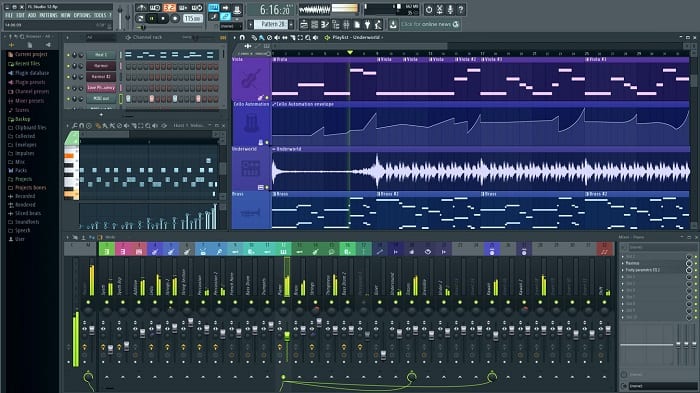

But do listen, rather than constantly look. Within your DAW keep levels peaking at -6dB and, perhaps obviously, keep everything out of the red. And always take regular breaks, as listening to the same track over and over can make you tired in the brain as well as the ears. By all means have an occasional blast, but generally keeping things low is good. You might end up mixing for very long sessions, so you’ll want to monitor at low levels to give your ears a rest. We’ll start by looking at levels and our advice when mixing is to pull everything back, and that means your monitor/speaker levels too.

Then we move on to EQ to fill the dynamic range with clear basses and shimmering trebles. Then it’s onto panning to move things around the stereo spectrum and fill that space between speakers. Mixing is all about letting your music breathe in these dimensions, so first of all you adjust the levels to try and allow everything to be heard. By getting levels right, spreading the music out correctly in the stereo spectrum and adding depth with EQ, you should end up with a great-sounding track with a full dynamic one that uses every space in almost three sonic dimensions. You can read more about how we put this piece together in our Studio One tutorial series at but the reality is that by following this tutorial, you should be able to apply some mixing principles to whatever music you are making, so feel free to load in your own tunes and follow our advice to get a professional mix.Īnd the mix process really does add this pro sheen. We already have a tune and have arranged it roughly for this tutorial. This DAW really has come of age and many people are starting to use it, thanks to its slick GUI, dozens of included instruments and effects and its high-quality, professional-level features. We’ll also use the opportunity to explore some of Presonus Studio One 4’s great features for mixing.

Yes, the excitement is in the composition, but mixing really does matter when it comes to the end results! In reality, of course, you could and perhaps should be mixing as you arrange, but for this tutorial we’re going to focus on just the mixing process, really to show how important a role it plays. Mixing your music correctly can seem like a laborious task after the excitement of getting your initial ideas into some loops, and then expanding those loops into an arrangement, so it can often be seen as the boring process.


 0 kommentar(er)
0 kommentar(er)
